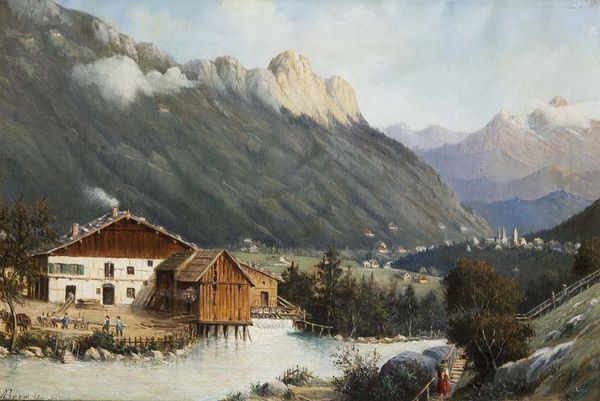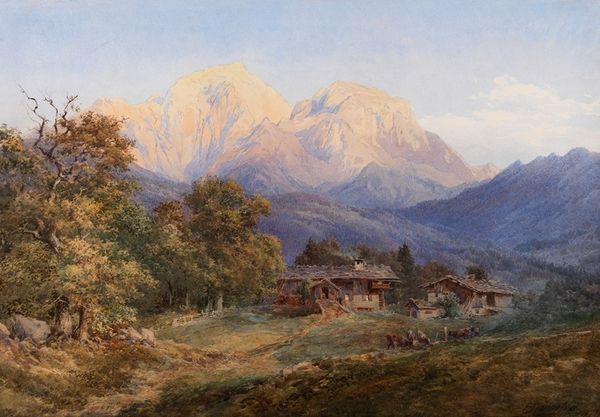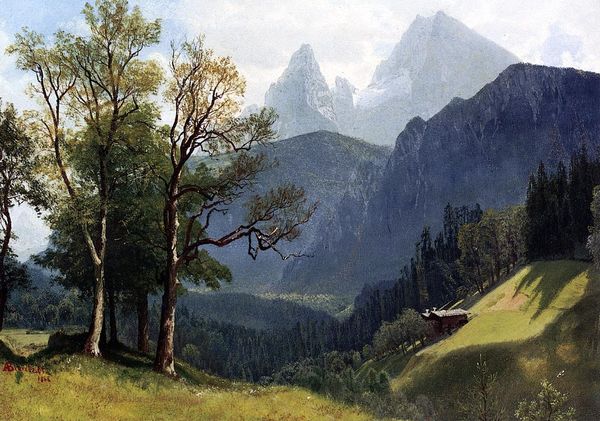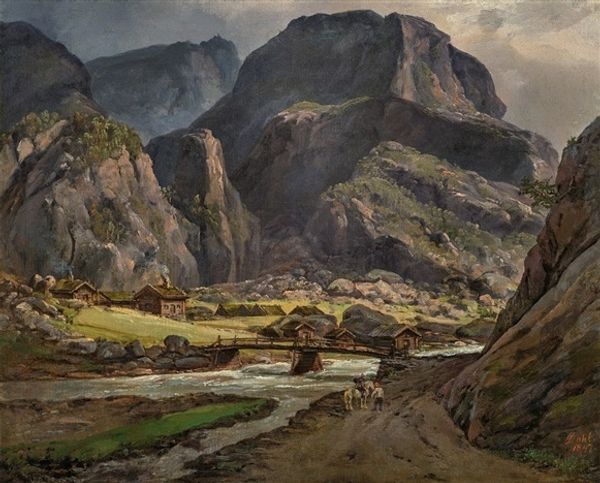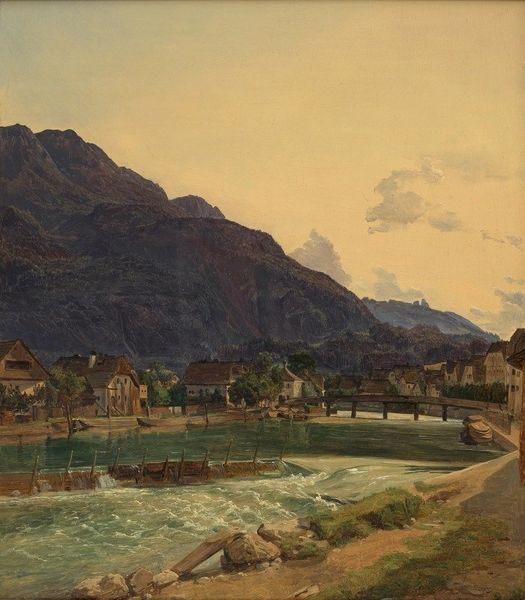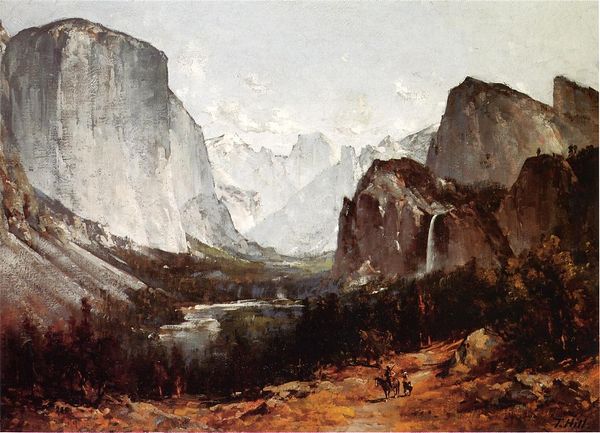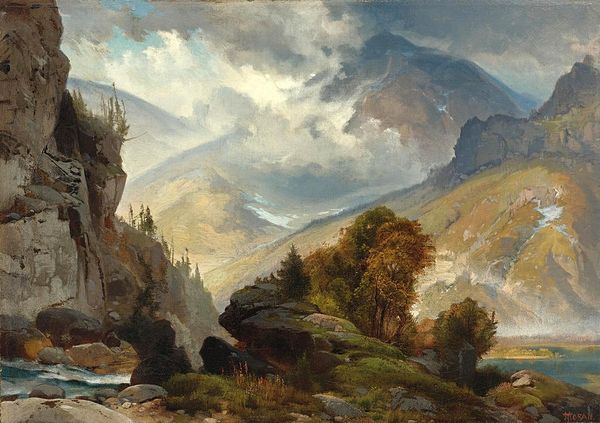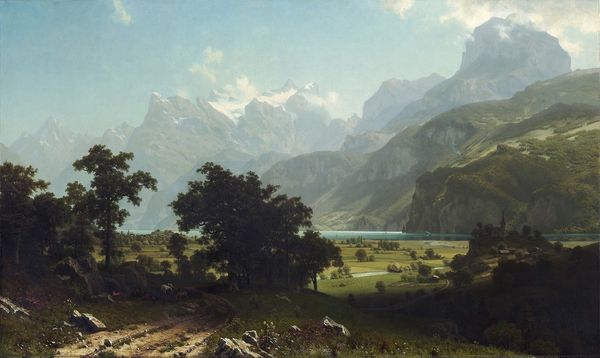
Copyright: Public Domain: Artvee
Curator: Let's turn our attention to Edward Theodore Compton's watercolor and tempera work, "Lauterbrunnen," likely created between 1880 and 1890. It presents a classic alpine vista. Editor: It strikes me first as exceptionally tranquil. The cool tones and the soft focus create a palpable sense of stillness, a hush that feels both inviting and a bit isolating. Curator: Absolutely. Compton, painting during a time of rising industrialization and urbanization, often depicted landscapes as untouched refuges. His works often implicitly criticize these societal shifts, positioning nature as a space of solace, especially for those displaced or marginalized by modernity's relentless march. The sheer scale of the mountains versus the humble habitations in the valley speaks volumes about humanity’s relative place within nature. Editor: Indeed, scale is key. Look at how he uses atmospheric perspective—the blurring and lightening of hues—to convey immense distance. The painting is structured with near-perfect balance; the cool tones and crisp definition of the towering rock faces contrast to the village nestled at its feet. I’m struck by how the rushing waters below and the muted buildings connect in this composition of immense size. Curator: And let's consider who had access to these landscapes during the late 19th century. Travel to the Alps, while romanticized, would have primarily been available to wealthy Europeans. Compton’s paintings thus cater to a specific, privileged gaze, subtly reinforcing a colonial dynamic where certain populations have the means to enjoy these so-called unspoiled vistas, an unsustainable access that is a pertinent crisis for environmentalism today. Editor: The precision of Compton’s technique, the way he renders light filtering through the trees and glinting off the water—it's captivating. There's an undeniable aesthetic appeal in the play of textures, contrasting the rugged mountain surfaces with the softer, organic forms of the foliage. His control over the medium really does elevate it beyond the descriptive. Curator: Considering his legacy, it prompts us to confront who benefits from landscape representation and how images of untouched wilderness impact our understanding of both access and responsibility. Editor: A beautiful scene. Now, examining the interplay between form and feeling, I grasp the profound depths and implications within such seemingly tranquil depictions.
Comments
No comments
Be the first to comment and join the conversation on the ultimate creative platform.


